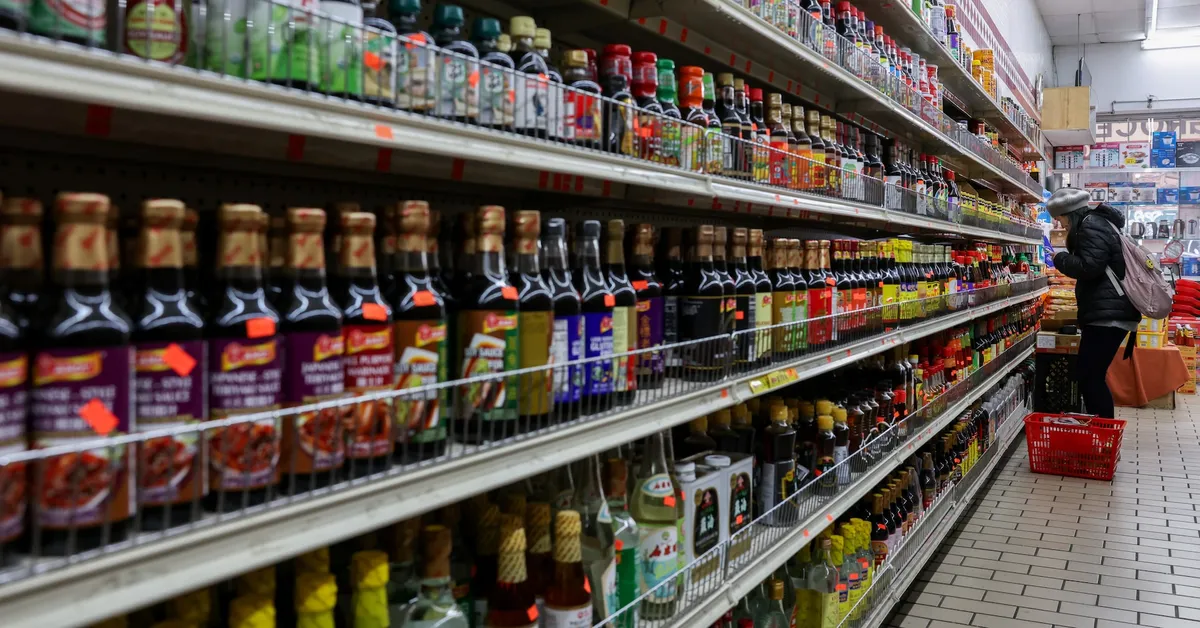
On May 13, the Labor Department reported that U.S. consumer prices experienced a moderate rebound in April, resulting in the smallest annual increase in four years. Despite this uptick, the inflation outlook remains uncertain, particularly against the backdrop of ongoing tariffs. The reported rise in prices fell short of economists' expectations and has led to the consensus that the Federal Reserve will likely maintain its pause on interest rate cuts until late summer.
The latest data indicates a cooling of price pressures prior to the implementation of President Donald Trump's extensive import duties, the effects of which are expected to be reflected in consumer price data starting in May. While recent developments between the U.S. and China suggest a potential de-escalation of their trade war, a 10% blanket duty on nearly all imports, along with various sector-specific tariffs, remains in effect.
Jeffrey Roach, chief economist at LPL Financial, noted that improvements in global trade could provide more clarity regarding the future trajectory of inflation. However, the uncertainty surrounding the aftermath of these temporary trade agreements complicates matters for the Fed, particularly as the risk of stagflation looms. Should this ambiguity persist, the Fed may find itself unable to adjust its policy in June.
The Consumer Price Index (CPI) rose by 0.2% in April, following a 0.1% decline in March—the first drop since May 2020, according to the Bureau of Labor Statistics. Economists surveyed by Reuters had anticipated a CPI increase of 0.3%. A significant contributor to this increase was the shelter category, which encompasses rents, accounting for more than half of the overall CPI rise. This increase was somewhat countered by a 0.1% decline in food prices, following a 0.4% gain in March.
Grocery prices saw a notable decline of 0.4%, marking the largest decrease since September 2020, primarily due to a staggering 12.7% drop in egg prices. However, when viewed year-over-year, egg prices surged by 49.3%. Other categories, such as fruits, vegetables, cereals, and bakery products also experienced price reductions, while prices for nonalcoholic beverages increased by 0.7%. Gasoline prices slightly eased by 0.1%, although consumers faced rising costs for natural gas and electricity.
In the twelve months leading up to April, the CPI rose by 2.3%, a slight decrease from the 2.4% increase recorded in the previous twelve months. This data likely reflects the impact of tariffs, including the doubling of taxes on fentanyl-related products imported from China to 20% and a 25% levy on imported cars and light trucks, which were imposed prior to Trump's April 2 announcement.
While Trump has temporarily paused most country-specific tariffs for 90 days, the 10% blanket duty on nearly all imports remains in place. Additionally, the Trump administration has agreed to reduce duties on Chinese goods to 30% during this period, while tariffs on U.S. goods entering China will decrease from 125% to 10%.
Despite these developments, economists anticipate that inflation will continue to rise this year, albeit likely at a lower rate than previously expected due to the recent trade truce between the two major economies. This tempered inflation outlook allows the U.S. central bank to maintain a cautious wait-and-see stance. Analysts believe that easing trade tensions could help the U.S. economy avoid a recession, although growth is expected to remain sluggish throughout the year.
Shorter-dated U.S. Treasury yields have seen a slight dip following the inflation data release, while U.S. stocks have generally traded higher. The dollar has also seen a slight decrease against a basket of currencies. Excluding the more volatile food and energy categories, the core CPI rose by 0.2% last month, building on a 0.1% increase in March. The core inflation rate was bolstered by a 0.3% rise in shelter costs, which compensated for a 0.1% drop in hotel and motel room prices.
Household furniture prices surged by 1.0%, and the motor vehicle insurance index rose by 0.6%. Conversely, airline fares decreased by 2.8%, while used car and truck prices fell by 0.5%. Prices for new motor vehicles remained unchanged. Year-over-year, the core CPI increased by 2.8% in April, matching the rise from March.
Looking ahead, Kathy Bostjancic, chief economist at Nationwide, predicts that inflation may peak at around 3.4% year-over-year in the fourth quarter, a reduction from the previous forecast of 4%. The Fed's inflation target stands at 2%, and looming U.S. duties on pharmaceutical products and semiconductors present additional challenges. President Trump continues to view tariffs as a means of generating revenue to offset his tax cuts and revitalize the declining U.S. industrial sector. The Federal Reserve recently opted to keep its benchmark overnight interest rate steady within the 4.25%-4.50% range, with financial markets anticipating a potential policy easing in September.